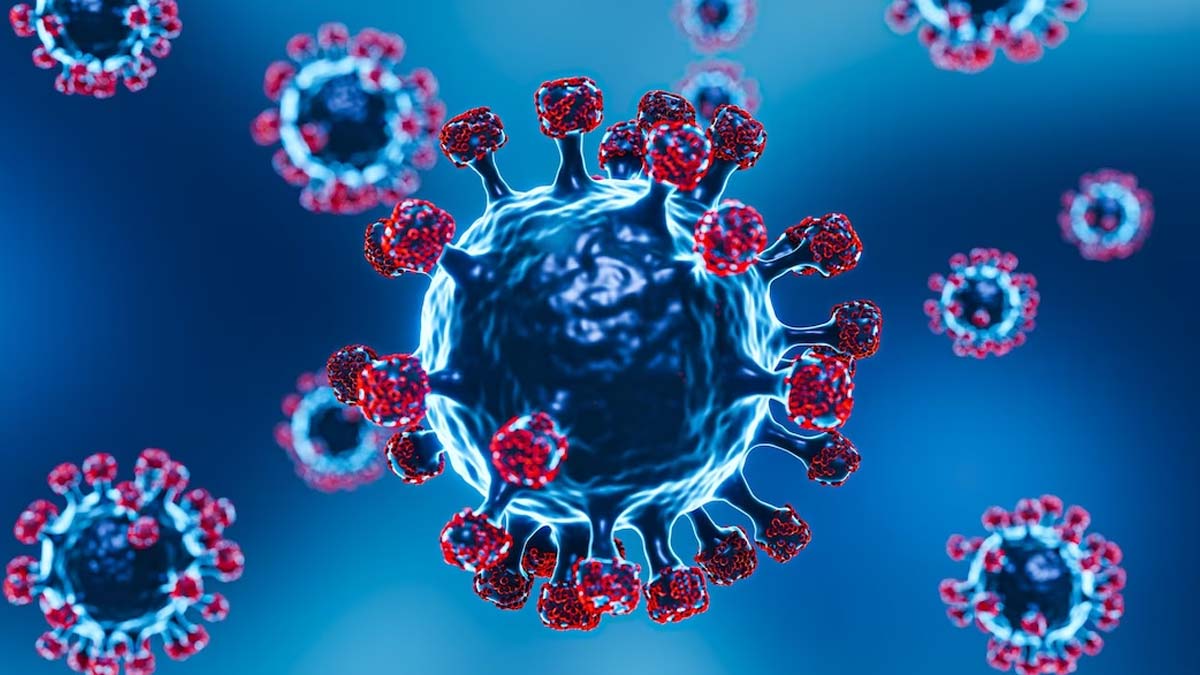
The government of Maharashtra has identified 91 cases of the new COVID-19 Omicron subvariant KP.2, which has surpassed the previously prevalent JN.1 variant. This new subvariant is now the main cause of infections in several countries, with Pune recording the highest number of KP.2 cases at 51, followed by Thane with 20 cases, according to a TOI report.
Table of Content:-
Rise of KP.2 in Maharashtra
Maharashtra first detected the KP.2 variant in January, and by March and April, it had become the dominant strain in the region. Dr Rajesh Karyakarte, the state's genome sequencing coordinator, noted an increase in cases but no corresponding rise in hospitalisations or severe cases. The state saw a slight increase in cases in March, averaging around 250 detections, likely due to the transmission of the KP.2 variant, which originated from JN.1, the dominant COVID strain at the end of 2023.

Also read: 'Whole Of Government' Approach: How India Plans To Tackle New Covid Variant
In addition to Pune and Thane, seven KP.2 cases were reported in Amravati and Aurangabad. Solapur had two cases, while Ahmednagar, Nashik, Latur, and Sangli each reported one case. Notably, Mumbai has not reported any KP.2 cases.
FLiRT Variant Group
The newly identified group of variants, collectively known as "FLiRT," primarily consists of the KP.1.1 and KP.2 strains.
The nomenclature for these strains comes from their specific mutations, with one strain containing mutations represented by the letters "F" and "L" and the other strain featuring mutations denoted by "R" and "T." This subvariant was first recognised globally in January and is now predominant among strains in the US.
Genetic Characteristics and Transmission Rate
Japanese researchers recently conducted a study revealing that the KP.2 (JN.1.11.1.2) variant, a descendant of JN.1, has three unique substitutions in the S protein - S:R346T, S:F456L, and another substitution in a non-S protein. These genetic changes have significantly increased the reproduction rate of KP.2 compared to its precursor, JN.1.

The study found that the reproduction number of KP.2 is 1.22-, 1.32-, and 1.26-times higher than that of JN.1 in the USA, United Kingdom, and Canada, respectively. This indicates that KP.2 has a higher transmission rate than JN.1 in these countries.
Also read: Covid JN.1 Sub-Variant: Authorities Step Up In Pune
Surprisingly, the study also discovered that despite having a higher reproduction number, KP.2 has significantly lower infectivity compared to JN.1, with a 10.5-fold difference.
COVID-19 Symptoms and Long-Term Effects
The latest information on COVID-19 symptoms and long-term effects indicates that the KP.2 and JN.1 variants, accounting for around 16% of cases, likely result in symptoms similar to those associated with other variants.
These symptoms include a sore throat, runny nose, coughing, head and body aches, fever, congestion, fatigue, and, in severe instances, shortness of breath. Unlike the early stages of the pandemic, fewer people now experience a loss of taste and smell. Patients are often surprised to learn that COVID can also cause gastrointestinal symptoms like diarrhoea, nausea, and vomiting, which are sometimes mistaken for norovirus symptoms.
Those people who have previously had COVID typically experience subsequent infections that are as mild, if not milder, than their initial illness. While the incidence of long COVID has dropped since the pandemic began, Fikadu Tafesse, a virus expert at Oregon Health & Science University, cautions that multiple infections increase the risk of acquiring long COVID.
The emergence of the KP.2 variety in Maharashtra shows the persistent problems of controlling COVID-19, even though the severity of cases appears to be under control. Continued vigilance and surveillance for emerging variations are critical in reducing the virus's impact on public health.
Also watch this video
How we keep this article up to date:
We work with experts and keep a close eye on the latest in health and wellness. Whenever there is a new research or helpful information, we update our articles with accurate and useful advice.
Current Version
